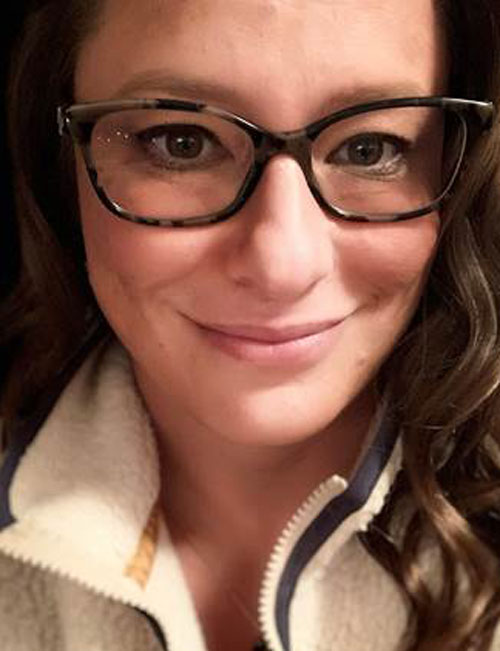Fed up with not being able to keep their children physically in school full time in a Pennsylvania suburb, a group of concerned parents is fighting back by demanding that the school district provide options for in-person learning.
“Both of my children have struggled with pandemic learning,” says Stacey Whomsley, a mom of two boys with special needs in West Chester, Pennsylvania, about 35 miles west of Philadelphia. “They do not like being behind a screen. It’s stressful, it’s not natural, and it isn’t suited to how they learn.”
“Last spring was horrible,” adds Beth Ann Rosica, another West Chester mother of two boys. “My kids were miserable and unhappy. They hated doing online learning. It was an absolute catastrophe in our house. Meltdowns every day.”
Across the country, more than half of students—53%—do not have access to regular in-person learning, instead receiving instruction entirely remotely, according to a nationally representative survey by Education Next.
The survey also revealed major differences in types of learning that are accessible to children: 24% of children in traditional public schools attend school in-person, while 60% of those in private schools do so.

Last fall, Whomsley says, the West Chester Area School District “basically abandoned” one of her special needs sons after the fifth grader was diagnosed with a concussion that occurred on school grounds.
Because of his concussion, she says, her son couldn’t use any electronic screens, which made virtual learning impossible during the weeks of his recovery. At the time, the school district was doing hybrid in-person learning, allowing students on campus two days a week.
Whomsley, 43, says she thought that because her son had special needs—and now a concussion—school officials would allow him to learn in person temporarily, for four days a week.
“Knowing this was a short-term situation, and a medically necessary one, we were shocked to be declined,” she says.
When she asked what her son was supposed to do for three days a week at home without screens while classes were remote, Whomsley says, “we were initially offered independent worksheets for him to do on his own.”
“No teacher interaction. No student interaction. No formal time to meet daily and ask questions,” she says, adding:
We said, ‘Unacceptable.’ They said, ‘We can excuse him from the trimester.’ We said, ‘Unacceptable.’ It’s a foundational year—he’s getting ready for middle school. You don’t abandon him when he’s preparing for that.
That was Whomsley’s final straw with remote learning. She immediately enrolled her 10-year-old son in a private school that was open for in-person learning five days a week.
“He has grown more in the last seven weeks that he’s been in private school than we saw in the prior seven months at public school,” she says.
Rosica, 53, made a similar decision to enroll the younger of her two sons, a sixth grader, in private school.
“Fortunately, we are in the position that we can afford private school,” Rosica says. “He’s much happier than he certainly would’ve been if he was at home.”
Both moms acknowledge how privileged they are to be able to afford to pull their children from public school. With their other boys still enrolled in West Chester public schools, however, they’re watching on a split screen the difference that in-person learning makes academically and emotionally.
The disparities between in-person and virtual education are growing more obvious as the pandemic drags on: Studies show a disproportionate number of poor and minority students falling behind, with researchers warning that the gaps could be even larger than suggested because so many students are absent from testing this school year.
In Fairfax County, a wealthy suburb of Washington, D.C., for example, the number of students with disabilities who got F’s in two or more classes increased by 111% since schools went remote, and by 106% for English-language learners.
As school districts and teachers unions refuse to allow kids back in school, parents with means have fled. Independent Women’s Forum spoke with some of those parents as part of a project called Left Behind: Pandemic Learning Campaign, which seeks to raise awareness about the effects on children of denying access to in-person learning.
The experience “has completely eroded our confidence in the public school system and made us realize that we need to do more to course-correct before it is too late for our community,” Whomsley says.
Jim Scanlon, superintendent for the West Chester Area School District, said in a written statement that federal law prevents him from commenting on the specifics of any child, but that the school district “acts responsively to parents and staff to provide a safe education for all of its children.”
Scanlon cited guidance from the Chester County Health Department, which includes a social distancing guideline of 6 feet, for being able to teach only 50% of students at one time.
“This pandemic has been very difficult for everyone, students, parents, staff, and board members,” he said. “As parents and educators, we are all doing the best we can under very difficult circumstances.”
Like millions of other parents, the COVID-19 pandemic awakened Whomsley to the brokenness of the public school system.
“This crisis has demonstrated more clearly than ever that how we finance K-12 education is broken,” says Lindsey Burke, director of the Center for Education Policy at The Heritage Foundation. “We fund systems, rather than students, so when public schools close to in-person instruction, many families don’t have options.”
Instead, Burke argues, states across the country “should fund children directly, allowing them to take their education dollars to any education provider of choice. That would make dollars nimble—hedging against loss of education continuity in the future—and would enable students to select into learning options that are the right fit for them.”
West Chester parents are now fighting for exactly that. Not just for their own children, but all students in their area.

As part of that effort, parents created an online survey—conducted on a volunteer basis—that has garnered over 1,500 responses from families in 54 of the state’s 500 school districts. Among the most troubling findings: 1 in 3 parents say their children’s mental health is worse or significantly worse than a year ago, and nearly 1 in 3 say their children are falling behind or not really learning at all.
“As a parent, it is so upsetting and depressing to watch your child fall apart in front of your eyes, and there’s no end in sight,” Rosica says. “We are in a public health emergency because our children are not in school.”
The survey found that the vast majority of parents want schools to provide an option for in-person classes, and do so immediately. For those uncomfortable with sending their children to school in person, the school district already provides virtual options.
But for those children who want to be back in the classroom, “they deserve that right and they deserve that choice,” Rosica says.
According to research by EdChoice, 83% of students in 2016 attended traditional public schools, but only 28% of parents said that option was their preference, indicating a large demand for choice. With the remote learning crisis that’s unfolded in the past year, that demand for alternative options is exploding.
Since pandemic learning began, an estimated 3.5 million students have left the public school system for private schools, homeschooling, virtual charters, microschools, and “pandemic pods.” But with money attached to institutions instead of students, families without means have no option but to keep their children enrolled in virtual public schools.
“Prior to the school shutdowns, I was not a proponent of school choice,” Rosica says. “I worried that educationally disadvantaged children would ultimately be left behind when middle-class parents started choosing different options.”
However, she says, the past 10 months have made her realize that low-income and minority children are disproportionately hurt as a result of a lack of choice.
“Parents with means can pay for private school, tutors, or learning pods, while low-income families don’t have the luxury of working from home and often leave their children home alone for up to 10 or 12 hours while they struggle with online learning,” Rosica says, adding: “All parents should have the choice about the best educational option for their children.”
Whomsley says she appreciates how fortunate she is to be able to afford an alternative option for her son.
Knowing what a difference in-person education makes, she took it upon herself to file for charter status so that she could start her own microcharter school and provide that same option for other students.
“I have made it my mission to make education accessible to the children in my area, even if I have to start small with 15 [students],” Whomsley says. “The children like mine who need access to in-person education five days a week are not being given any option, and it’s time that we start doing it.”
On Monday night, though, the West Chester school board denied her charter application. Moments after receiving that notification, Whomsley emailed to say:
“My candidacy for school board is official, as of tonight.”
Read more about the Independent Women’s Forum’s Left Behind: Pandemic Learning Campaign here.
Have an opinion about this article? To sound off, please email letters@DailySignal.com and we will consider publishing your remarks in our regular “We Hear You” feature.






























